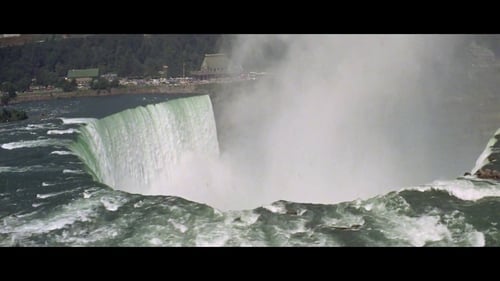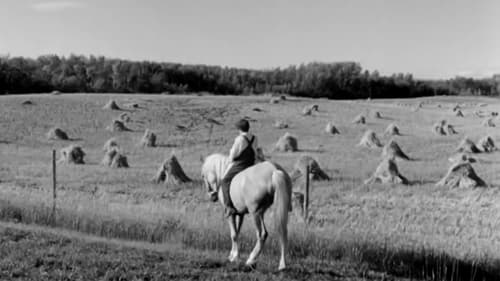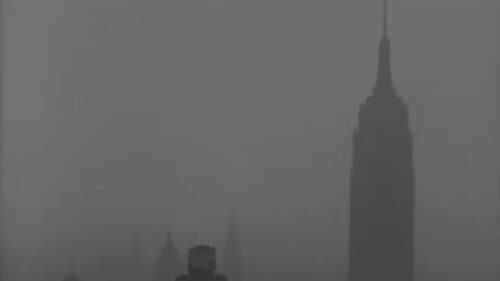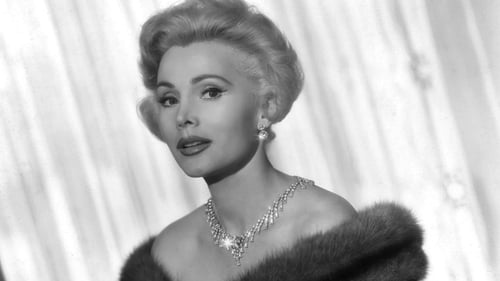
Editor
This film follows the aftermath of the Oka crisis, which brought Indigenous rights into sharp focus. After the barricades came down, the Royal Commission on Aboriginal Peoples was created, and travelled to more than 100 communities and heard from more than 1,000 representatives. For two-and-a-half years, teams of Indigenous filmmakers followed the Commission on its journey.

Writer
In 1977, Prince Charles was inducted as honorary chief of the Blood Indians on their reserve in southwestern Alberta. The ceremony, conducted in the great Circle of the Sun Dance, commemorated the centennial anniversary of the original signing of Treaty 7 by Queen Victoria.

Writer
One of the most sensational get-rich-quick schemes that took place in France over 200 years ago with economist John Law at the helm.

Narrator
This documentary explores a variety of projects undertaken by scientists at Environment Canada's Freshwater Institute in Winnipeg to study the processes that pollute or disrupt clean and balanced freshwater environments.

Producer
The amazing success story of the Laser, a thirteen-foot sailboat built by Ian Bruce of Pointe Claire, Québec, and of Performance Sailcraft, the company he formed to produce and market it. Simply designed, durably built of fiberglass, it is a pleasure craft that has brought summer sailing within everyone's reach on coastal and inland waters around the world.

Vocals
A detailed retrospective of animation and animation techniques at the National Film Board of Canada.

Commentary
This short documentary profiles a community engaged in developing sustainable living methods, including food production and small-scale solar and wind technology, on a farm in Massachusetts in the 1970s. Well before sustainability was a mainstream concern, these prescient innovators attempted to create a vision of a greener, kinder world. "Think small," say the New Alchemists. "Look what thinking big has done."

Himself / Narrator
This documentary film is about wolves and the negative myths surrounding the animal. Exceptional footage portrays the wolf's life cycle and the social organization of the pack, as well as film of caribou, moose, deer and buffalo.

Director
A documentary history of the exciting, sometimes ill-fated exploration of Canada's Arctic, produced jointly by the British Broadcasting Corporation and the National Film Board of Canada. The film shows the challenge and the rewards of the far north and, from rare film footage, some of the exploits of the first and last men to run the gauntlet of the cold: Byrd's flight; Stefansson's sled journey; Captain Bernier's explorations; and finally, the voyage of the U.S.S. Manhattan.

Director
The second of two coproductions by the British Broadcasting Corporation and the National Film Board of Canada, People of the Seal, Part 2: Eskimo Winter is compiled from some of the most vivid footage ever filmed of the life of the Netsilik Inuit in the Pelly Bay region of the Canadian Arctic. Together, the two films provide insight and understanding of a culture now almost vanished, as they show the incredible resourcefulness of the Netsilik (People of the Seal) who have adapted to one of the world's harshest environments. Part 2: Eskimo Winter shows how Inuit families gather in communities on the sea ice to harpoon seal as they come up through breating holes in the ice. Also seen is the mid-winter season, a time of intense socializing in the communal igloo, with games, contests and ceremonial activities.

Writer
The second of two coproductions by the British Broadcasting Corporation and the National Film Board of Canada, People of the Seal, Part 2: Eskimo Winter is compiled from some of the most vivid footage ever filmed of the life of the Netsilik Inuit in the Pelly Bay region of the Canadian Arctic. Together, the two films provide insight and understanding of a culture now almost vanished, as they show the incredible resourcefulness of the Netsilik (People of the Seal) who have adapted to one of the world's harshest environments. Part 2: Eskimo Winter shows how Inuit families gather in communities on the sea ice to harpoon seal as they come up through breating holes in the ice. Also seen is the mid-winter season, a time of intense socializing in the communal igloo, with games, contests and ceremonial activities.

Narrator
A boy's carved boat travels through the Canadian wilderness until it reaches the ocean.

Narrator
Una vista desde un helicóptero de las diez provincias canadienses en 1966. El resultado es un retrato a vista de pájaro grande, hermoso y fascinante del país. Aquí nada es igual a lo visto antes, incluso las Cataratas del Niágara. Los canadienses estarán encantados con esta vista panorámica de un territorio familiar. Hecho para distribución internacional para el centenario canadiense.

Narrator
A look at the Hutterites, an Anabaptist religious community similar to the Amish or the Mennonites in rural Alberta.

Narrator
At the instigation of the filmmakers, the young men of the Ile-aux-Coudres in the middle of the St-Lawrence River try as a memorial to their ancestors to revive the fishing of the belugas interrupted in 1924.

Script
Based on a short story by Sinclair Ross, this short film recalls rural life on the Prairies in the 1930s. In the film a farmer's young son, sent to town to hire a man for the harvest, readily accepts when an itinerant trumpet player, down on his luck, begs a chance. He is hardly the kind of man the boy's father had in mind, but that night his trumpet speaks from the shadows and everyone pauses to listen.

Screenplay
Based on a short story by Sinclair Ross, this short film recalls rural life on the Prairies in the 1930s. In the film a farmer's young son, sent to town to hire a man for the harvest, readily accepts when an itinerant trumpet player, down on his luck, begs a chance. He is hardly the kind of man the boy's father had in mind, but that night his trumpet speaks from the shadows and everyone pauses to listen.

Director
Based on a short story by Sinclair Ross, this short film recalls rural life on the Prairies in the 1930s. In the film a farmer's young son, sent to town to hire a man for the harvest, readily accepts when an itinerant trumpet player, down on his luck, begs a chance. He is hardly the kind of man the boy's father had in mind, but that night his trumpet speaks from the shadows and everyone pauses to listen.

Narrator
A neurotic man relates his unsuccessful attempt to open a simple savings account at a bank.

Narrator
Rousing tales of the North-West Mounted Police are brought to life through photos and artists' sketches. In 1873, the North-West Mounted Police were established to maintain law and order in the North-West Territories. They undertook a trek from Fort Dufferin, south of Winnipeg, to Fort Whoop-up, near present-day Lethbridge, Alberta. The force raised the flag and proclaimed the Queen's Law, ensuring that the Canadian West would not become a lawless, American-style frontier.

Writer
Rousing tales of the North-West Mounted Police are brought to life through photos and artists' sketches. In 1873, the North-West Mounted Police were established to maintain law and order in the North-West Territories. They undertook a trek from Fort Dufferin, south of Winnipeg, to Fort Whoop-up, near present-day Lethbridge, Alberta. The force raised the flag and proclaimed the Queen's Law, ensuring that the Canadian West would not become a lawless, American-style frontier.

Commentator (voice)
A young man of the Kainai Nation (Blood tribe) shows us contemporary life of people as he attends a Sun Dance ceremony with the tribe.

Writer
A light, humorous look at the motor car and the great North American itch for a place on the road. From the comparative peace of Honest Joe's used-car lot, this film hustles you onto our public speedways, where hot rubber erases any distance between all points. Slow-motion and pop-on-pop-off photography make this a provocative, revealing study of motormania unlimited. A 1960 black and white production. (Also released under the title 1/3 Down and 24 Months to Pay.)

Commentary
Here is a graphic picture of the tobacco harvest in southwestern Ontario. At the end of July, transient field workers move in for a brief bonanza when the plant is ripe. The tobacco harvesters call it "the back-breaking leaf."

Director
This short film is a humorous look at the tourist industry in Canada. In tongue-in-cheek fashion, it points out the importance of good public relations in the tourist industry - more specifically, what not to do to tourists. (Sourced from the National Film Board of Canada: https://www.nfb.ca/film/tourist_go_home)

Narrator
This short documentary (the second of two parts) follows Glenn Gould to New York City. There, we see the renowned Canadian concert pianist kidding the cab driver, bantering with sound engineers at Columbia Records, and then, alone with the piano, fastidiously recording Bach's Italian Concerto.

Narrator
Canadian concert pianist Glenn Gould enjoys a respite at his lakeside cottage. It is an aspect of Gould previously known only to the collie pacing beside him through the woods, the fishermen resting their oars to hear his piano, and fellow musicians like Franz Kraemer, with whom Gould talks of composition. (First of two parts.)

Writer
This 1959 documentary short is a frank portrait of the daily operations inside the Montreal General Hospital’s emergency ward.

Writer
This short documentary (the second of two parts) follows Glenn Gould to New York City. There, we see the renowned Canadian concert pianist kidding the cab driver, bantering with sound engineers at Columbia Records, and then, alone with the piano, fastidiously recording Bach's Italian Concerto.

Writer
Canadian concert pianist Glenn Gould enjoys a respite at his lakeside cottage. It is an aspect of Gould previously known only to the collie pacing beside him through the woods, the fishermen resting their oars to hear his piano, and fellow musicians like Franz Kraemer, with whom Gould talks of composition. (First of two parts.)

Writer
American scientist Dr. Frank Smith is brought to Britain to help the C.I.A. There is a defecting East block scientist they want him to debrief. The commies are less than amused and set Dr. Smith up for a murder.

Director
This short documentary depicts Christmastime in Montreal. The milling crowds, department store Santas, Brink's messengers, kindergarten angels and boisterous nightclubs all combine to make a vivid portrait of the holidays.

Director
This short film is a re-enactment of the critical year in Dr. Frederick Banting's life when he discovered insulin for the treatment of diabetes at the University of Toronto. It depicts the odds against which he and his assistant, Charles Best, worked; the scepticism of other doctors and the final victory that gave thousands of diabetics hope for a healthier life.

Director
An attempt to recapture the magic of childhood as the cameras follow children at play.

Director
This film observes, in a Montréal public school, the teaching of English to immigrant children. To thousands of children arriving in Canada from Greece, Italy, France, Germany or Japan, English is "a foreign language." Under able coaching they begin to understand and even enjoy the vagaries of the English language.

Writer
This short film is a telling portrait of the discourse about and treatment of alcohol addiction in the middle of the 20th century. In a fictional setting, the film examines the insecurities and inner motivations that cause the protagonist to lean on alcohol. His job and home life are threatened by his addiction, and the doctor to whom he finally turns explains the medical and other resources available to him.

Director
This short film is a telling portrait of the discourse about and treatment of alcohol addiction in the middle of the 20th century. In a fictional setting, the film examines the insecurities and inner motivations that cause the protagonist to lean on alcohol. His job and home life are threatened by his addiction, and the doctor to whom he finally turns explains the medical and other resources available to him.

Director
The dramatization of the sympathetic hospital treatment a general practitioner receives when he suffers a mental breakdown. There is an emphasis on the types of facilities available and on the wide variety of mental and emotional ailments which can be cured or alleviated with medical knowledge.

Writer
This short puppet animation from the fifties tells the story of Magic Bow, a First Nations boy endowed with magic gifts. Magic Bow is in the big city for the first time, thrilling audiences with his tricks at the Wild West Rodeo. Outside the arena, cars, trucks and buses zip by at dizzying speeds. With the help of some savvy city dwellers, Magic Bow learns a few important traffic rules to help him navigate the streets safely.

Script
In this film, Paul Tomkowicz, Polish-born Canadian, talks about his job and his life in Canada. He compares his new life in the city of Winnipeg to the life he knew in Poland, marvelling at the freedom Canadians enjoy. In winter the rail-switches on streetcar tracks in Winnipeg froze and jammed with freezing mud and snow. Keeping them clean, whatever the weather, was the job of the switchman.

Director
An enthusiastic but naive campaign worker causes trouble for his candidate due to his unorthodox campaign tactics, which turn out to violate the election law.

Director
A child spends two weeks in a summer camp at Muskoka, Ontario.

Director
This documentary from 1945 explains The Veteran's Land Act, which provided for low-cost loans to veterans who wished to purchase properties and re-establish themselves in Canada after the war. The loans were for properties ranging from town lots to full-scale farms. The Act also provided aid in purchasing farm machinery, fishing boats, building materials and livestock. Produced by the NFB for the Canadian Department of Veterans Affairs.

Commentary
On the Kainai (Blood) First Nations Reserve, near Cardston, Alberta, a hopeful new development in Indigenous enterprise. Once rulers of the western plains, the Bloods live on a 1 300-square-kilometer reserve. Many have lacked gainful employment and now pin their hopes on a pre-fab factory they have built. Will the production line and work and wages fit into their cultural pattern of life? The film shows how it is working and what the owners themselves say about their venture.

Writer
In two half-hour parts, The Living Machine explores the progress made in electronics technology and looks forward to an exciting world-to-be. Produced in 1962, the first part demonstrates the capacities of a computer's "artificial intelligence," far exceeding that of any one human brain. The second part shows experiments in electronically duplicating some sensory perceptions.

Writer
On the Kainai (Blood) First Nations Reserve, near Cardston, Alberta, a hopeful new development in Indigenous enterprise. Once rulers of the western plains, the Bloods live on a 1 300-square-kilometer reserve. Many have lacked gainful employment and now pin their hopes on a pre-fab factory they have built. Will the production line and work and wages fit into their cultural pattern of life? The film shows how it is working and what the owners themselves say about their venture.

Narrator
This short film retraces the life of Herman Smith Johannsen – the man who introduced the sport of cross-country skiing to Canadians. From past to present, his life story is portrayed through pictures from sports newsreels, Norwegian archives and his family album. The film catches up with him at both the Canadian Ski Marathon, where he is the honoured guest, and on a return trip to his native Norway.











































